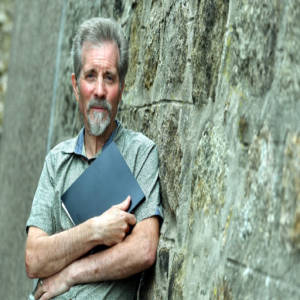Arts for Art's Sake
This is AberdeenArt Gallery.
Aberdeen Art Gallery is the main visual arts exhibition space in the city of Aberdeen in Scotland.
The permanent collection including works by the Post-Impressionists and the Scottish Colourists as well as applied arts and crafts.
The central hall is supported by granite columns in a variety of colours, derived from different quarries in the local area and far beyond.
At the western end of the building, with a room inside and a monument outside, is a major war memorial.
The origins of Aberdeen Art Gallery & Museums can be traced to 1873 when John Forbes White and a number of local art collectors decided to hold a public exhibition to display their collections. From this developed a plan to establish a public art gallery for the benefit of citizens, an objective that continues to drive the programmes of activity within the Museums and Galleries service today.
Aberdeen's handsome granite Art Gallery, designed by A Marshall Mackenzie, one of the loveliest Victorian galleries in the UK, was opened in 1885. The displays combined industrial exhibitions with exhibitions of art, greatly enhanced by generous gifts, including Aberdeen granite merchant Alexander Macdonald's private collection in 1900. Twenty years later the building was extended to accommodate the establishment of a plaster cast collection from which art students at the newly established Gray's School of Art, at that time adjacent to the Art Gallery, could practice drawing. This light and clean central space is used today to exhibit works by leading contemporary artists.
In 1907 the Town Council assumed responsibility for the building and its growing collections. In the 1920s further development took place with the addition of the City's War Memorial and the Cowdray Hall, opened by King George V and Queen Mary. The cost of the War Memorial was met by public subscription, and that of the Cowdray Hall, a unique recital venue, by Lord and Lady Cowdray "with a view to encouraging the taste for art and music in the City of Aberdeen".
In 1937 the Regional Museum opened in the basement below the Cowdray Hall, with displays of local history, natural history and geology. The Regional Museum closed in the 1970s, with the opening of a new display space in James Dun's House. Also in the 1930s, plans were made to restore and refurbish "Cumberland House" a fine 16th century town house in Guestrow. The building was opened in 1953 by HM Queen Elizabeth the Queen Mother as Provost Skene's House. The early 1960s saw further developments at the Art Gallery with the opening of the James McBey Print Room and Art Library in 1961. This fitting tribute to a famous local artist was thanks to the generosity of his widow, Marguerite, who left another substantial bequest when she died in the 1990s.
1985 saw the opening of Aberdeen Maritime Museum in Provost Ross's House on the Shiprow by HM Queen Elizabeth the Queen Mother. The museum was designed to tell the story of Aberdeen's maritime history, including the impact of the newest industry - North Sea oil.
The Council continued to expand its museum provision when the Tolbooth opened in 1995. One of the oldest buildings in Aberdeen, which includes 17th century gaols, this museum traces Aberdeen's civic history, including the history of crime and punishment.
- 0
- 0
- Canon EOS 300D DIGITAL
- f/11.0
- 18mm
- 800

Comments
Sign in or get an account to comment.


